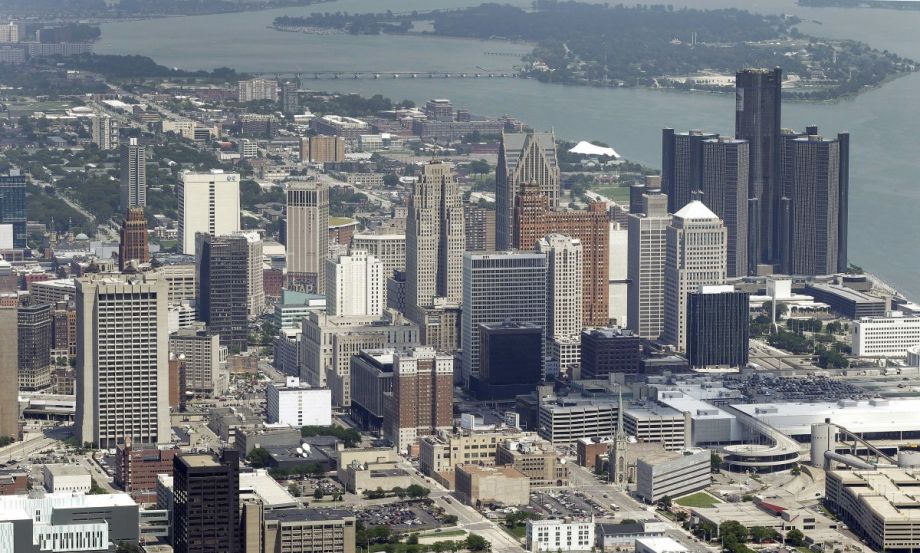For government leaders and urban practitioners, the New Urban Agenda offers a compelling vision for the future of cities — resilient, sustainable, equitable and inclusive. The agenda rightly argues cities should be people-centered — providing access to critical amenities that enable residents to live fulfilling, self-determined lives. In many ways, the New Urban Agenda is a framework for the ideal city.
But the gap between the ideals of the agenda and implementation is large. Prioritizing funding for affordable housing, climate resilience and city infrastructure alone will require profoundly different ways of working. Implementers of the New Urban Agenda will need to reshape cities challenged by inequity and sprawl into sustainable accelerators of opportunity.
The Kresge Foundation and our partners faced similar challenges working in Detroit. With almost 4 in 10 residents living in poverty, inadequate public transit and decaying infrastructure, Detroit had no choice but to work towards the ideal of a dramatically different Detroit — one that provides quality of life for all of its residents.
Detroit is beginning to chart a path towards a brighter, stronger, more equitable future. We have not always gotten things right, and we are nowhere near done. But over the past decade, we have begun to uncover new ways of working — ways to bring about change — that might be of interest to leaders in other cities seeking to implement the New Urban Agenda.
Deliberately Establishing the Enabling Conditions for Change
Cities are complex systems, which each have their own structure, innate capabilities and dysfunctions. Leaders can set their cities up for success by taking time to establish the conditions under which change is more likely to happen. This means taking stock of the current state of city systems:
- Assessing the strength of key institutions and actors needed to bring about change;
- Determining which strengths — institutions, actors, or geographies — might be built upon;
- Reflecting on which building blocks are missing or weak, and investing in these areas; and
- Considering the alignment of actors across functions and sectors.
In Detroit, creating the conditions for successful implementation meant focusing on:
- PLANNING: Adopting a comprehensive, community-driven land use framework to guide decision-making and to ensure individual transactions, projects and programs align with Detroit’s overarching priorities;
- PEOPLE: Investing in community engagement and technical expertise during the planning process; supporting civic institutions and neighborhood organizations — the framework’s key implementers; and
- CAPITAL: Strengthening our community investment system.
Given the complexity of developing a comprehensive plan for a city, we are often asked whether it was worth the effort. We think it was. First, the process of creating a comprehensive plan helped our community press a reset button, delve deeply into the trade-offs and emerge from the planning process oriented towards similar goals. Second, we believe the resultant framework — which addresses all of our key urban systems at once (land use, city services, transit and economic development) — is more likely to move the needle on poverty than attempting change through individual, isolated efforts.
Plans serve little purpose without people to execute them. In Detroit, Kresge and our partners invested heavily in the people and institutions needed to bring about change. Fellowships placed talented mid-career professionals from Detroit and other cities in key government and nonprofit positions. Neighborhood stewards received grant funding to cover nonprofit operating costs, learning and evaluation. Collectively, these investments serve as the engine of our plan for change.
It’s tempting to leave obtaining finance to individual projects and program leaders. But producing healthy housing, inclusive public spaces, equitable infrastructure and affordable transit require so many individual projects, it makes sense to consider what can be done at the city level to make all projects easier to finance and execute. Practitioner Robin Hacke calls this improving a city’s capital absorption capacity — increasing its ability to attract and deploy various forms of capital in support of community investment priorities.
In the same way Detroit worked to strengthen organizations and seed talent, we took stock of our ability to align funding streams with priority projects. What we found wasn’t ideal — capital was hard to find, and when it was available, it had to be cobbled together by practitioners from a multitude of sources. Today, we’ve assembled capital funds to make it easier to finance projects, better resourced community actors to generate and execute projects, and streamlined municipal processes to support equitable development.
As cities attempt to achieve the goals of the New Urban Agenda, it may be tempting jump right into implementation. But, if Detroit is any example, it might make sense to first consider — or at least to parallel process — creating the conditions under which implementation is more likely to succeed.
Moving On to Implementation
When it comes to implementation, Detroit is settling into a model of distributive leadership — where organizations, regardless of sector, work in a coordinated manner to tackle challenges. Kresge’s President and CEO Rip Rapson, calls this “sector-agnostic problem smashing.” For example, the private sector has taken the lead on community investments in Detroit’s downtown. The Duggan administration has taken lead on public service delivery and home mortgage financing. The Kresge Foundation was the lead investor in a public rail system and is a steward to fragile ecologies such as human services. This model of distributed leadership allows us to tackle multiple issues at once, leverage the full breadth of civic institutions and benefit from each institution’s unique capacities and capabilities. When one stream of work slows down, or one sector is struggling, the hard work continues as there are other irons in the fire.
Successful implementation of the New Urban Agenda will also mean, counterintuitively, taking risks. There is no room for recklessness when attempting to solve issues that impact resident quality of life. We cannot be haphazard in our approaches. But we also have an obligation to ensure the sum total of our efforts adds up to a meaningful reduction in poverty. In Detroit, this has meant that in addition to investing in proven approaches, we are also leveraging the city’s most risk-tolerant resources — including philanthropic capital — to support innovation and to place a few bets that have the potential to result in transformative change. Kresge’s investment in light rail in Detroit is one such investment — the first leg of what may result in a modern regional transit system accessible to all residents.
A Call For Bold Leadership
Dated ways of working will result in the ideals of the New Urban Agenda sitting on a shelf. The challenges of inequity are too pressing for us to allow this to be the case. It’s time urban practitioners around the world — including those of us in the philanthropic sector — stretch ourselves towards the promise of a new, more ideal possibility.
Detroit’s experience suggests leaders may be able to reach their implementation goals by keeping a steady eye on process: deliberately investing in the conditions necessary for change, establishing distributive leadership structures, taking some risk and keeping a firm, relentless focus on results.
The motto of the city of Detroit is “We hope for better things.” Today in Detroit, we don’t just hope for the ideals outlined in the New Urban Agenda — we act. We hope the lessons we are learning may help to accelerate the realization of the agenda’s goals in other cities.
Chantel M. Rush is managing director of The Kresge Foundation’s American Cities Program.




_600_350_80_s_c1.JPEG)











